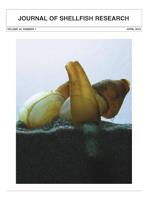Lucrative commercial cultivation of Pacific geoduck (Panopea generosa) has developed in the United States within the past 20 y, making it one of the most economically important commercial shellfish species harvested for export. Aquaculture of the species exists in close proximity to native populations, but very little is known about the health of native populations. Baseline information on endosymbiont identification, prevalence, intensity, and geographic distribution are necessary to facilitate management and/or mitigation of potential disease interactions between cultured and natural shellfish stocks. A survey of Pacific geoduck (P. generosa) parasites from three natural populations in Washington state (Totten Inlet, Thorndyke Bay, Freshwater Bay) was conducted in 2008 to 2010. Histopathology of 634 animals was used to explore trends of parasite presence and to identify potential environmental factors (site distribution, collection depth, and season) that influence parasite assemblages. Endosymbionts observed on histological examination included Rickettsia-like organisms (RLOs) in the ctenidia (n = 246); an unidentified metazoan parasite in the siphon epithelium (n = 220); and microsporidia-like species in the intestine (n = 103), siphonmuscle (n = 28), and ova (a Steinhausia-like parasite; n = 99). This study reveals the presence of three microsporidia-like organisms (including Steinhausia-like parasites) not previously described in geoducks. Assemblages of most parasites showed strong seasonal variations and site-specific distributions throughout the year. The presence of Rickettsia-like organisms may be driven by seasonal elevated temperatures, and was extremely common at Freshwater Bay. Metazoans and microsporidia were common in South Puget Sound and exhibited high infection intensity year-round. Spawning season drove Steinhausia-like parasite presence with no spatial driver. Baseline information on natural parasite levels, distribution, and infection loads complements ongoing monitoring of natural geoduck population dynamics, and provides crucial information to evaluate future disease events should they occur.
How to translate text using browser tools
1 March 2015
Temporal and Spatial Variability of Native Geoduck (Panopea generosa) Endosymbionts in the Pacific Northwest
Elene M. Dorfmeier,
Brent Vadopalas,
Paul Frelier,
Carolyn S. Friedman
ACCESS THE FULL ARTICLE

Journal of Shellfish Research
Vol. 34 • No. 1
March 2015
Vol. 34 • No. 1
March 2015
disease
geoduck
Panopea generosa
parasite
shellfish
Washington State




